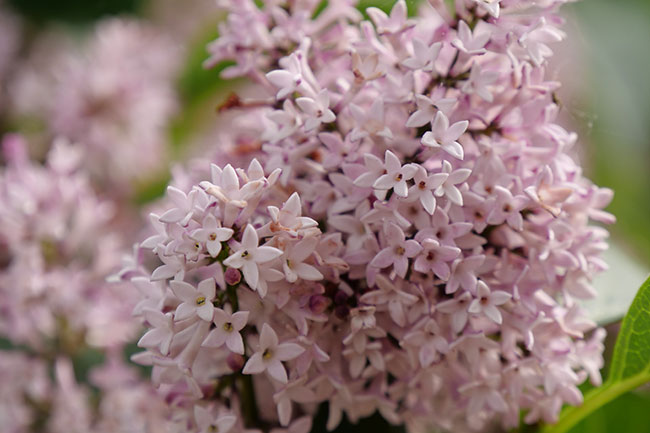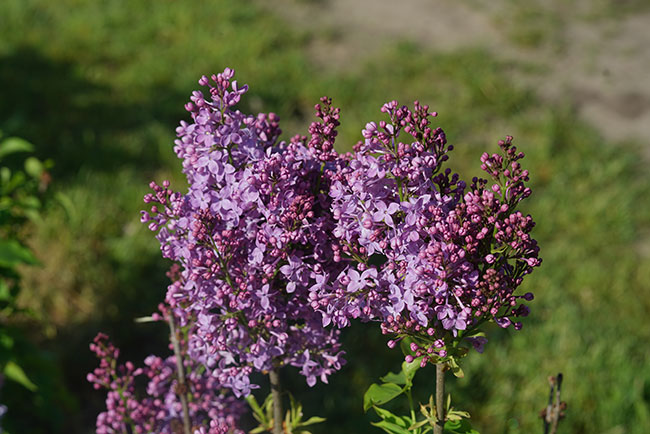
Celebrating a Garden Classic — Lilac
Lilacs have an everlasting appeal that consumers have loved for generations. They appeal to multiple senses with their beautiful colors and unforgettable fragrances.
And the category continues to evolve as breeders have been working diligently to enhance many of the variety’s traits including its form, size, color, “bloomability” and scent.
This month, we talked to several industry experts to get their take on this garden classic. Read on to learn what they had to say.

Bailey Nurseries
GPN: The National Garden Bureau has declared 2022 the Year of the Lilac in its shrub category. In your opinion, why do you think lilac was selected this year?
Debbie Lonnee, product development manager, Bailey Nurseries: It is a classic shrub or small tree that has never lost its appeal over the years. Truly one of the best spring blooming shrubs with great color and fragrance that reminds many of their grandmother’s garden.
Natalie Carmolli, media and public relations specialist, Spring Meadow Nursery: Everyone loves lilacs! There is nothing quite like the look and scent of lilacs. They are a staple of northern gardens, and although they are considered an old-fashioned shrub, there have been many modern adaptations to this classic plant. The newer cultivars make the already diverse Syringa category even more interesting and accessible.
GPN: How long has your company been involved in the breeding and introduction of lilac varieties, and what has been your role in their development?
Tim Wood, product development and marketing manager, Spring Meadow Nursery: We’ve been breeding Syringa (lilac) for over 17 years, with our early goal to improve on the smaller, shrubbier forms such as Syringa pubescens subsp. patula ‘Miss Kim’ and Syringa meyeri ‘Palibin’. The goal was to improve the foliage, branching habit and to improve on their pale flower colors. Our major breeding accomplishment was to integrate stronger reblooming into these plants, which resulted in our Bloomerang series. The flower colors are richer but they rebloom in mid to late summer and often right up until frost.
Lonnee: Many years ago we introduced the Fairytale series of lilacs, bred by Neal Holland of Sheyenne Gardens in North Dakota. Since then, we have bred our own varieties, including ‘First Editions Virtual Violet’, developed by Don Selinger, longtime Bailey employee (now retired) and have worked with breeders, such as Wilbert Ronald of Jeffries Nursery in Canada, on newer hybrids. We have recently introduced ‘Little Lady’ lilac, a compact ‘Miss Kim’ type, as well as a lovely Preston hybrid called ‘Pinktini’, which is also a small, compact, yet upright variety. Both of these are in our First Editions program.

GPN: How has the lilac category evolved over the years? Have you observed any changes or innovations?
Wood: For us, there has been less interest in the older French hybrids lilacs Syringa vulgaris, because they are hard to propagate and grow. They are afflicted with mildew and lilac bacterial blight. The early-flowering lilacs Syringa x hyacinthiflora look similar to French lilacs but have fewer disease issues and bloom at a younger age. Our breeding in this group has been to develop smaller, better branching plants that fit into small gardens and look better in containers.
Lonnee: While the reblooming lilac was a game changer, what I find most useful for today’s smaller gardens is that many newer hybrids have been developed with a more compact, smaller size, fitting beautifully into smaller yards and landscapes.
GPN: What are your personal favorite attributes of lilacs? What makes them special?
Lonnee: Fragrance! Nothing beats being able to put your nose up to a lilac flower in the spring. And color! Such a wonderful array of colors, from whites, pinks, purples and even a yellow.
Wood: Lilacs are all about fragrance, but they are also very adaptable, long-lived plants. They’re great for creating bouquets for the house. Many of us have fond memories bringing lilac flowers home to Mom.

GPN: Do you have any favorite lilac varieties?
Carmolli: Of course, the reblooming aspect and deep purple blooms of ‘Bloomerang Dark Purple’ make it a natural choice, but I also love ‘Scentara Double Blue’ lilac. This powerfully fragrant Syringa x hyacinthiflora delivers large blooms with beautiful, full double florets in a vibrant purple-blue hue.
Lonnee: I love the older variety called ‘Mount Baker’, a fantastic white with superior fragrance and perfect rounded form. I am also quite partial to ‘Virtual Violet’ as Don was my first boss at Bailey Nurseries and is one of the best plantsmen in the industry! ‘Virtual Violet’ has very cool emerging foliage that is purple in color, which contrasts beautifully against the purple flowers. It is the perfect hedge plant as it gets tall, but not wide.
GPN: How can growers and retailers capitalize on the lilac category?
Lonnee: By having container-grown flowering plants on the shelf during the spring rush.
Carmolli: People grow lilacs for the blooms. So choosing lilacs that rebloom, like the Bloomerang series, delivers a selling point that others can’t match. Also, stocking lilacs that mature to different sizes is a must. ‘Bloomerang Dwarf Purple’ and ‘Bloomerang Dwarf Pink’ lilacs, ‘Baby Kim’ dwarf lilac, and semi-dwarf cultivars like ‘Scentara Pura’ take less space on the growing floor, are easier to ship, and
provide a range of choices for consumers who would love a lilac but don’t think they have room for one in their garden. People don’t think twice about growing a wide variety of shrubs like hydrangeas and roses and syringa species, and cultivars are so varied that growing and selling multiples could be thought of in the same way.
GPN: Do lilacs present any challenges for growers and retailers?
Wood: As I mentioned earlier, the French hybrid lilacs are difficult to propagate and have disease issues. They don’t grow well in the South because they don’t get enough chilling hours needed to make flowers. They have irregular branching and don’t flower well as young container plants. This is the advantage of the Scentara series and other Syringa x hyacinthiflora varieties. They have few diseases, better branching and they require less chilling so they can be grown further south. They flower well as a young plant in a three gallon, so retailers can sell blooming plants. Even still, most lilacs typically don’t sell as well once they’ve finished flowering. This is the advantage of the Bloomerang series. Growers and retailers simply shear
them back and they flower again, which extends the selling season.
Lonnee: Lilacs are a bit slow-growing compared to many common shrubs and are generally a longer crop to finish, both in the bareroot field as well as containers. Patience is required! They do have a couple disease issues, such as powdery mildew, but with good growing practices can be overcome.
GPN: Why do you think lilacs are especially appealing at the consumer level?
Lonnee: Beautiful flowers with fragrance is a winning combination during spring when consumers are in the garden centers.
Carmolli: If you live in northern climates, chances are you’ve enjoyed a vase of sweet-smelling lilac blooms at one time or another. There is nothing quite like it. And scent memory is a powerful thing! When you smell the distinctive fragrance of a lilac bloom, it may take you back to the shrub your grandmother had in her backyard or to cutting lilacs for your mom in the gardens of your childhood home. This positive association, combined with its easy-care qualities, makes the lilac a very popular shrub for consumers.
Jasmina Dolce is managing editor of GPN magazine. She can be reached at jdolce@greatamericanpublish.com.









 Video Library
Video Library 


















